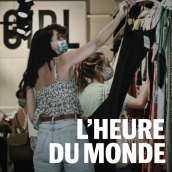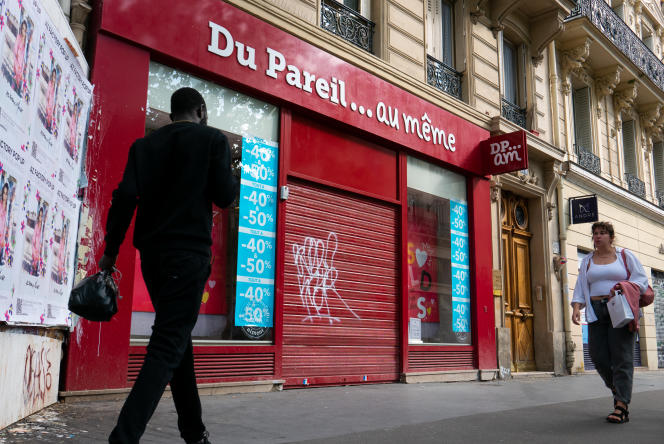The former C&A store on rue de Rivoli in Paris, which closed in February, has still not found a buyer. Of the twenty Gap stores closed permanently in May, only the models remain, naked, displayed in the window. The 163 locations of the San Marina shoemaker have been on the market since its liquidation in February. The one located in rue du Commerce, a famous artery of 15e arrondissement of Paris, is still empty.

Also listen Camaïeu, San Marina, Kookaï… Disaster in ready-to-wear
Since the spring, collective proceedings concerning clothing chains have multiplied. “The number of failures is at the pre-Covid level. That is to say, in total, all sectors combined, 50,000 per year in France”explain Frédéric Abitbol, General Delegate of the National Council of Judicial Administrators and Judicial Agents. And the trade sector is the one with the highest number of failures, according to the Banque de France (+ 50%, in May, in one year, knowing that this category includes car repair).
The Marseille brand Kaporal, in receivership since the end of March, should know the name of its buyer during a hearing at the Marseille commercial court scheduled for Tuesday July 11: 434 employees are waiting. Don’t Call Me Jennyfer, a brand with 220 stores which employs 1,112 people, was placed in receivership on June 21. Ditto for From the Same to the Same (DPAM, owned by the General group for children), 130 shops, 2,600 employees. Its sister company, Sergent Major, is in the safeguard procedure. The recovery plan envisaged by its founder, Paul Zemmour, provides for the closure of 87 DPAM and 47 Sergent Major. That is 25% of the group’s branches.
Aging concepts
Job safeguarding plans (PSE) are also increasing in number. On May 23, the Japanese group Fast Retailing, known for its 2,394 Uniqlo stores worldwide, imposes new cost reductions on Comptoir des Cotonniers and Princesse Tam-Tam, two French chains acquired in 2005, faced with aging of their concepts born before the advent of e-commerce. They will have to close 55 points of sale.
Already, in 2021, the first had cut 74 and the second, 26. More than 200 jobs then disappeared. This time, 304 positions fall by the wayside, including 185 at points of sale. At Pimkie, another figure of the 2000s, a PSE was validated on July 5. It concerns 250 positions, during the closure of 63 stores, by 2027.
All brands justify these measures by the succession of crises. That of the “yellow vests”, in 2018-2019, then that linked to the closure imposed in 2020 and 2021 to fight against the spread of Covid-19. The evolution of consumption patterns – now 17% of clothing sales are made on the Internet – also plays a role. Just like the low price competition from the Chinese site Shein, adds Emmanuel Locati, general manager of Don’t Call Me Jennyfer. Leaders have been talking about the situation since the beginning of 2022: the war in Ukraine has caused clothing costs to soar and business operating costs to jump. The purchasing power of the French has been affected.
You have 57.71% of this article left to read. The following is for subscribers only.
